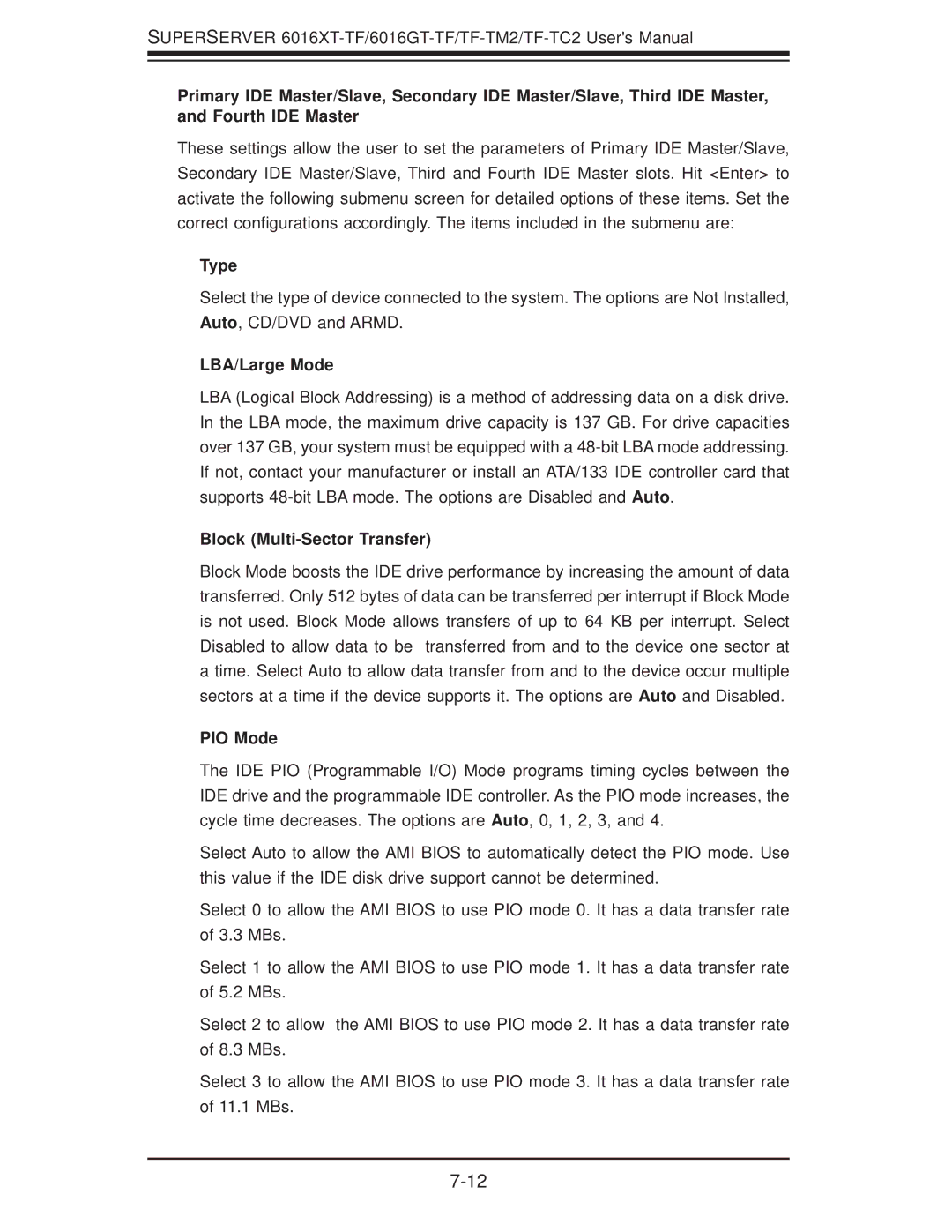6016XT-TF, 6016GT-TF-TM2, 6016GT-TF, 6016GT-TF-TC2 specifications
Supermicro has established itself as a leader in the server and storage solutions market, and its range of systems, including the 6016GT-TF-TC2, 6016GT-TF, 6016GT-TF-TM2, and 6016XT-TF, showcases advanced computing capabilities catered for various applications. Built for performance and reliability, these systems are optimized for demanding workloads and offer exceptional features.The Supermicro 6016GT-TF-TC2 is recognized for its powerful processing capabilities. It supports dual Intel Xeon processors, allowing organizations to handle extensive data processing tasks with ease. This model features eight DIMM slots, providing support for up to 512GB of the latest DDR4 ECC memory. With enhanced memory bandwidth and capacity, the 6016GT-TF-TC2 ensures smooth operations for applications requiring significant memory resources.
Similar to the TC2 variant, the 6016GT-TF configuration offers robust processing capabilities but differentiates itself with more flexibility in configurations. This model integrates high-efficiency power supplies and adheres to the latest energy standards, promoting lower power consumption while maintaining peak performance. The server is built around a compact 1U design, facilitating efficient rack space utilization in enterprise environments.
The 6016GT-TF-TM2 is another impressive variant in this lineup, providing outstanding I/O options. It includes support for multiple PCIe slots which allow for expanded connectivity and additional hardware integration. This feature is especially beneficial for businesses looking to enhance the performance of their systems with specialized hardware such as GPUs or network cards.
Lastly, the Supermicro 6016XT-TF elevates the performance further, focusing on high-performance graphics and computational requirements. This model is tailored for workloads that demand substantial graphic processing power, making it an appealing choice for fields such as AI research, machine learning, and graphic design.
All these models incorporate Supermicro's advanced thermal design to ensure proper airflow and cooling, enabling sustained performance even under heavy loads. Additionally, with Supermicro's commitment to quality and cutting-edge technology, users can expect unparalleled reliability and long-term service from these systems, making them an ideal choice for various industries ranging from cloud computing to enterprise applications and beyond.

